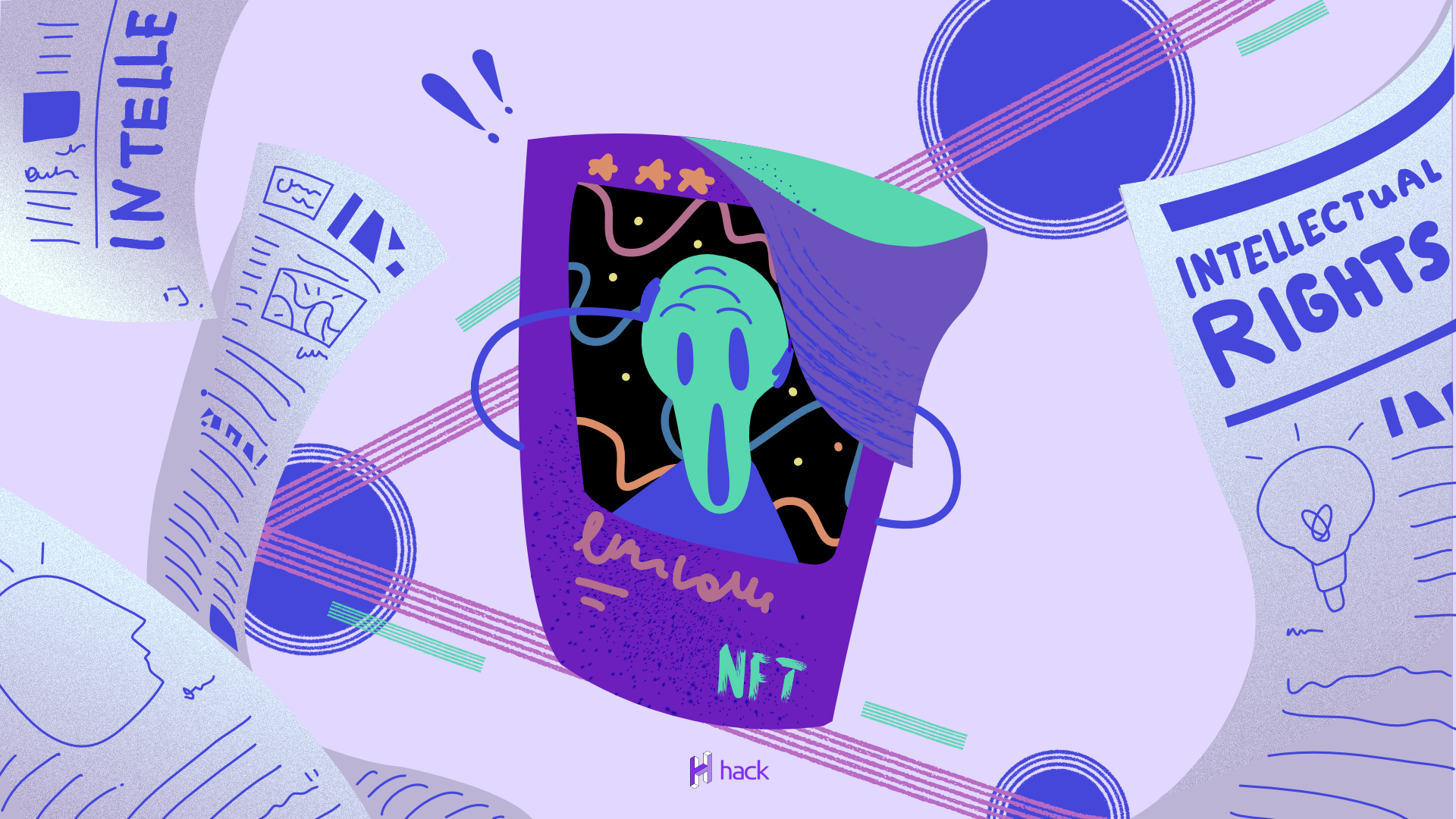Abstract
With the explosive development of blockchain technology, we witness a phenomenal growth in the tokenisation of all kinds of assets, including equity, funds, debt, and real estate. By taking advantage of decentralised technologies, digital assets are broadly grouped into fungible and non-fungible tokens. Here non-fungible tokens refer to those with unique and non-substitutable properties. NFT has widely attracted attention, and its protocols, standards, and applications are developing exponentially and successfully being applied to digital fantasy artwork, games, collectables, and many more.
Today, we are going to look into how NFTs can be utilized on issues with Intellectual Property (IP).
The concept of intellectual property was born in the 17th century with the increased production of intellectual property, along with developments in technology. It refers to the property right of people to all kinds of intellectual output – creations of the mind, such as inventions; literary and artistic works; designs; symbols, and names. Intellectual activity is sufficient for the existence of this right, and there is no need for it to take on a material form, such as a book, or to be registered in a registry, as with trademarks. The fact that intellectual property can exist without the need for any registration creates difficulties in preventing infringements against proving property and ownership. Because people do not have to register their intellectual products in order to establish a property right, it is not easy to prove that a particular person is the first to produce the idea or work and patent it, in the case of any alleged theft of those ideas and works. In national and international practice, people have used various methods to prove that they are the owners of their intellectual outputs. Notary registration, sending e-mails, keeping an electronic record, creating a time stamp, and reporting the work to professional associations are the leading ones, and each of them can be considered valid in terms of evidence law.
NFTs and the Evidence Function for Intellectual Property Ownership
Non-Fungible Tokens have begun to radically change many iterations in our lives. One of the areas where this radical change is most intensely recognised is in digital artwork and the proof of ownership’s functionality. As a matter of fact, since, NFTs work on the blockchain and cannot be copied or reproduced, they can prove property with high reliability. The creation of digital artwork or an intellectual product in the digital environment as an NFT gives it a non-replicable digital identity and gives its owner an extremely powerful evidentiary tool.
In fact, Mike Winkelmann (better known as “Beeple”) created an NFT piece called “Everydays: The First 5000 Days” which was sold for a remarkable $69.3 Million.
The infamous example of IP is the first-ever tweet sent by Twitter founder Jack Dorsey. The message, “just setting up my twttr,” published back in March 2006, can be viewed, free of charge, by anyone on the planet with internet access. But actual ownership of those five words—at least, digital ownership—became a real possibility. In a matter of fact, a few lines of code representing Dorsey’s message (along with its own blockchain-based digital signature that verifies the NFTs authenticity and ownership) was purchased just about a year ago (March 2021) for 1,630.58 ether, at the time of the transaction, was worth $2.9 million.
However, NFT’s proof of ownership is limited to the work placed in it. Therefore, what rights exactly the purchased NFT represent should be carefully examined. Sometimes, an NFT may include a limited use or license of work, rather than the whole package – work plus its rights.
NFTs simply serve to attest to the work or asset that represents it. Therefore, giving an NFT a transfer of rights function beyond the proof of ownership functions may cause some legal problems. The Intellectual Rights Law states that the person who created an intellectual work will be the owner of that work and stipulates that the owner of the material and moral rights related to the work will also be the owner of it. Indeed, when an oil painting is sold, the buyer takes over many rights regarding the artwork, but the artist still has the right to use the original painting, and the owner will not be able to change the painting. To give another example, a book purchased will not transfer rights to that literary work to the owner of the book. Just like in these examples, it is a matter of desire about which rights are included in the transfer of NFTs.
NFTs basically contain three elements – metadata, a unique identifier, and code. The code, also known as a “smart contract”, describes the nature and scope of the asset represented by an NFT. A smart contract should always be carefully examined in order to determine which rights the transfer of an NFT covers, as one cannot say that each NFT represents the whole work itself (beyond the asset placed in the NFT). As some NFTs involve limited use of the asset/work, the transferee is also subject to these limits.
If an NFT has been created for a work that is off-chain (a work that is not registered on a blockchain) by someone who is not actually a right holder, the transfer of this NFT will not mean the transfer of the relevant intellectual rights, nor will it gain copyrights. In this context, the NFT will only be the assurance of the uniqueness of the smart contract that it contains and the asset that goes with it. Apart from this, it does not have the power to establish legal rights that do not exist.
Final Thoughts
Due to their unique structures, NFTs are highly functional and practical tools in terms of preventing the copying of the smart contracts they contain and proving their existence. However, the fact that intellectual property does not have to be registered will exacerbate the difficulties experienced in proving ownership and patent. Especially since there is no legal form requirement for proof of ownership of intellectual property, coding intellectual productions on a blockchain and turning them into NFTs will also be accepted by the courts. Moreover, one should not expect NFT to solve all the problems of intellectual property and copyright apart from its function of proving ownership. NFTs can only attest to the uniqueness of the smart contract and its content, and if this smart contract contains a restriction on copyright, or if we are talking about an off-chain non-digital work, then an NFT’s transfer of the relevant work is immaterial and the transfer of moral rights will not be possible.



